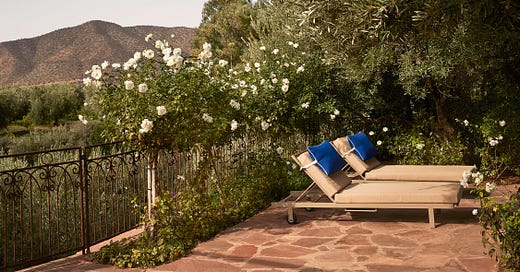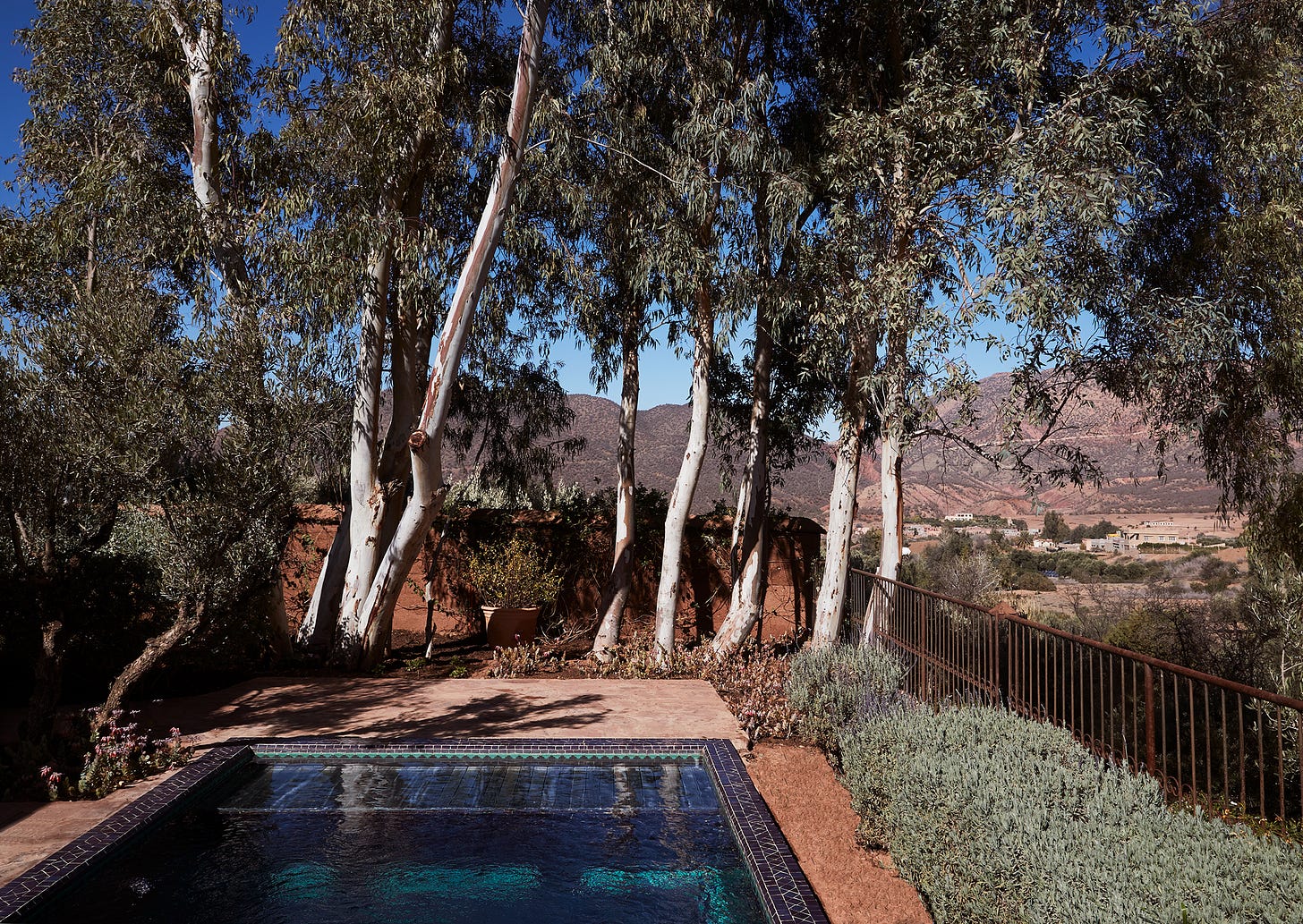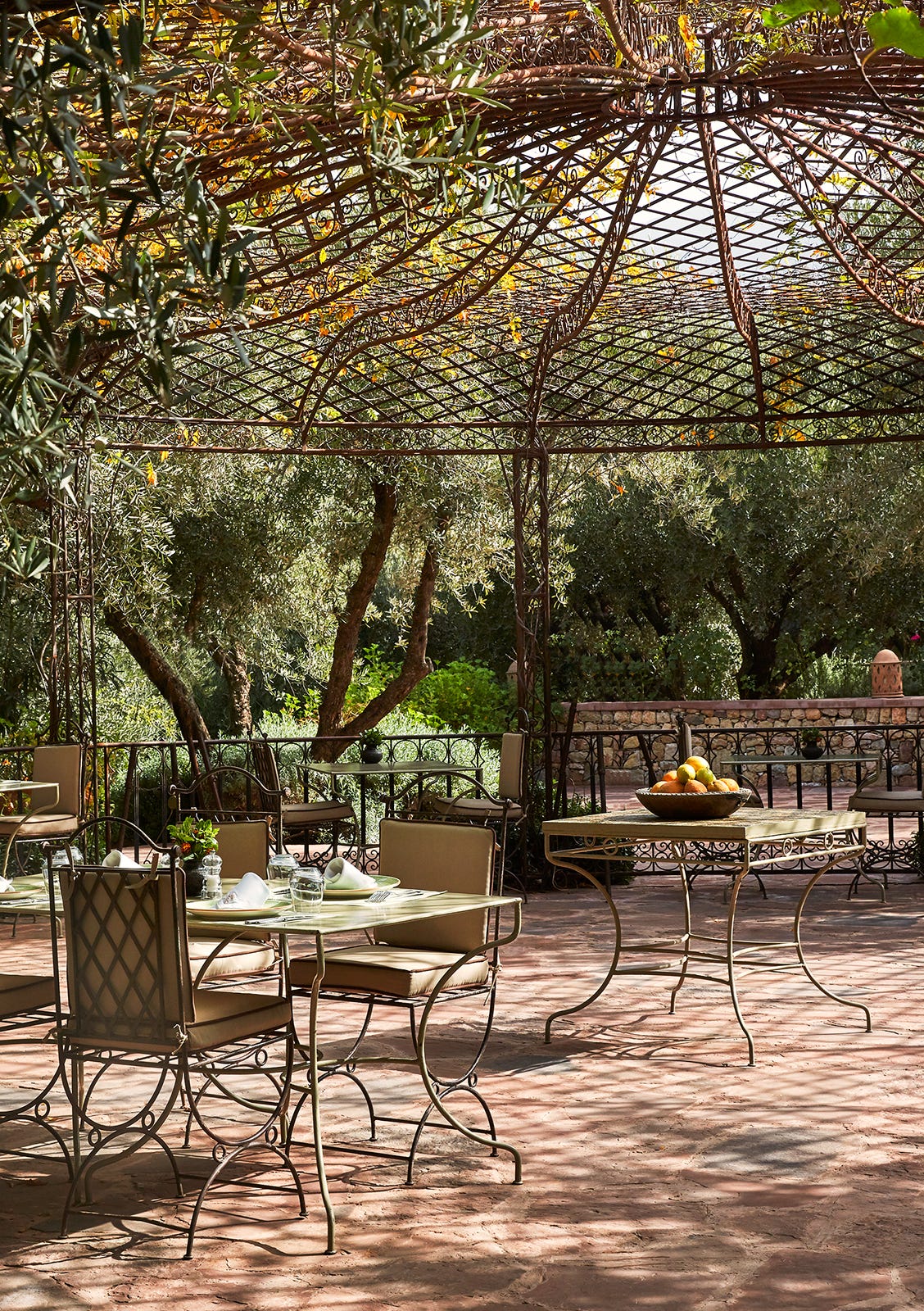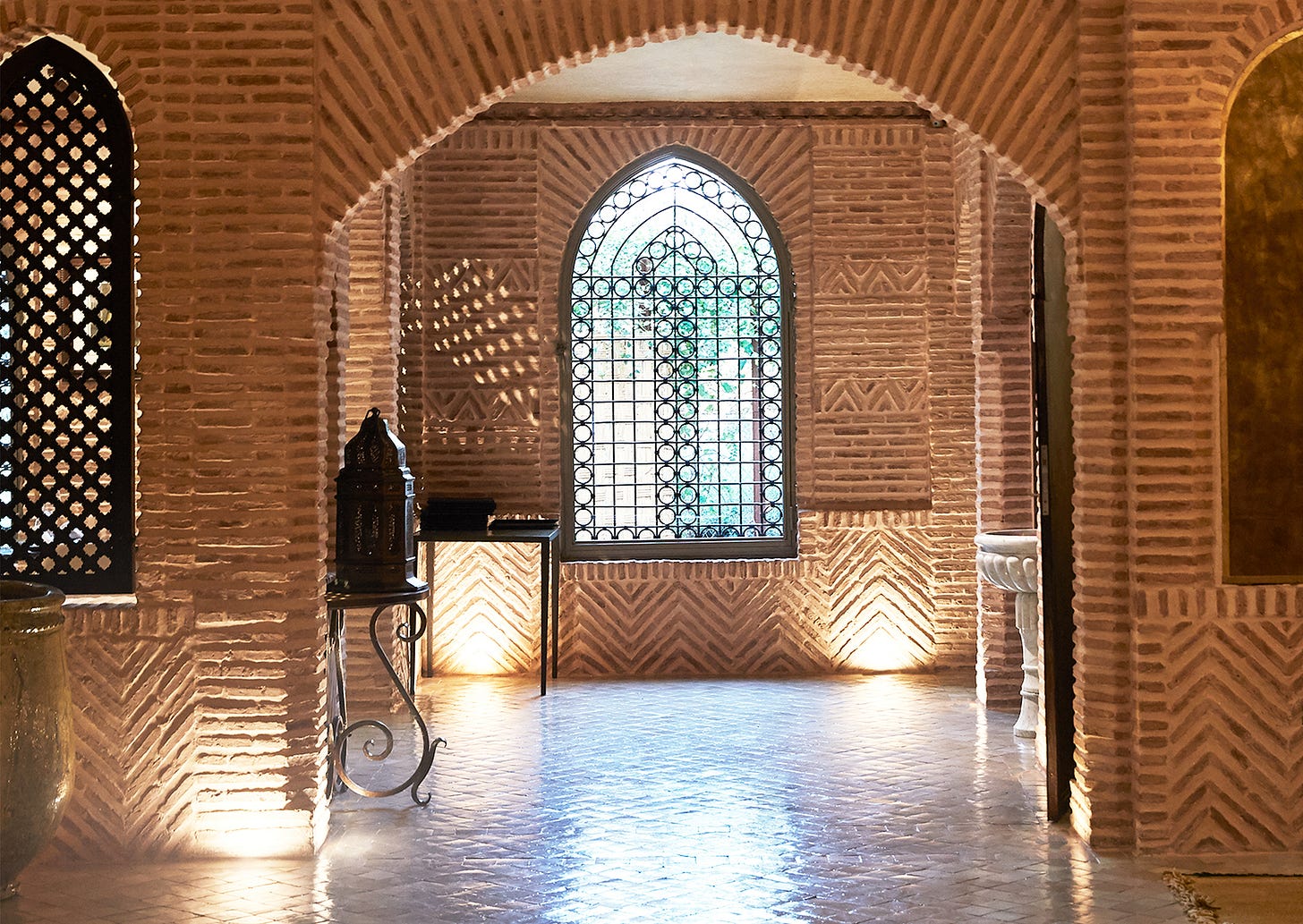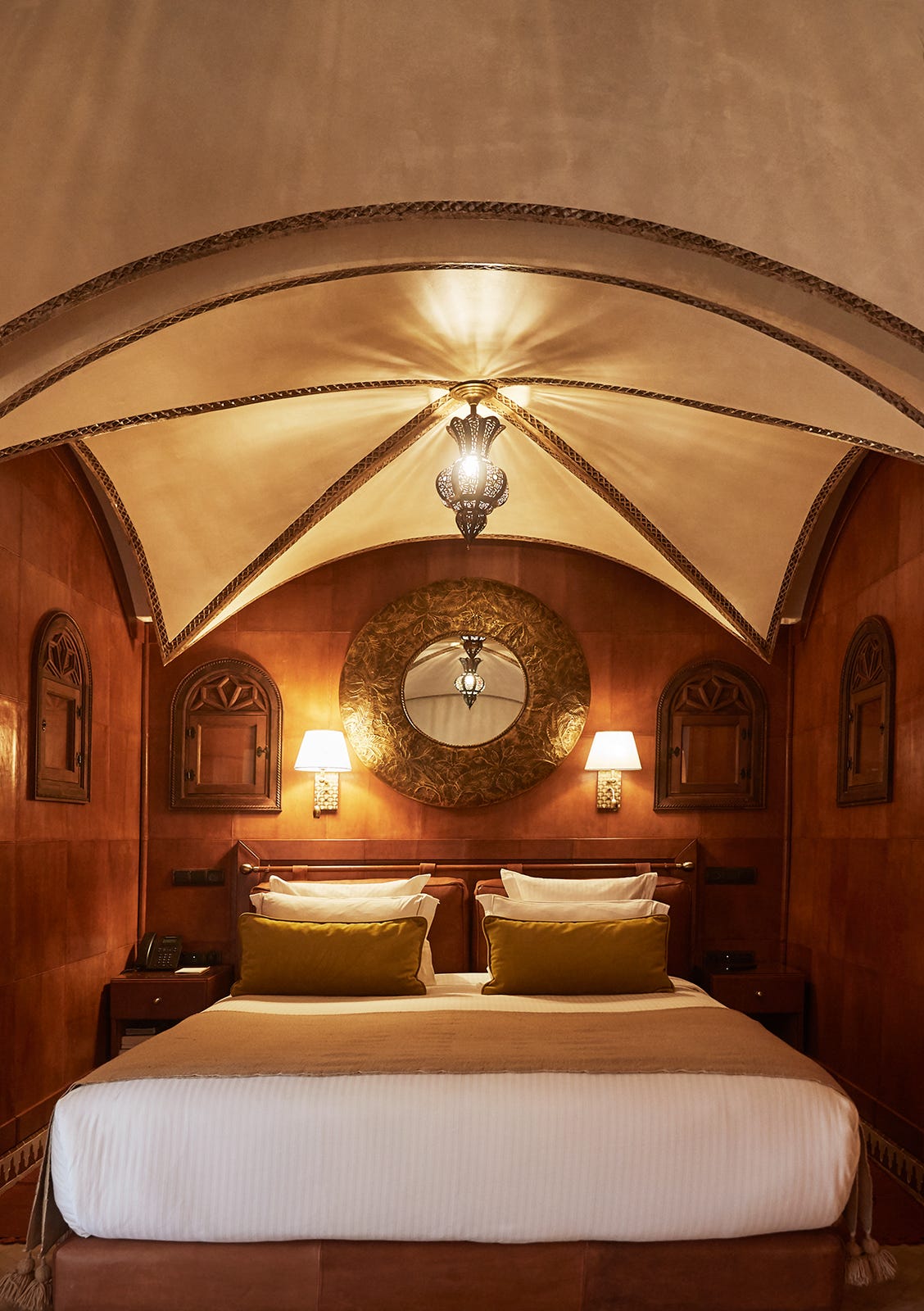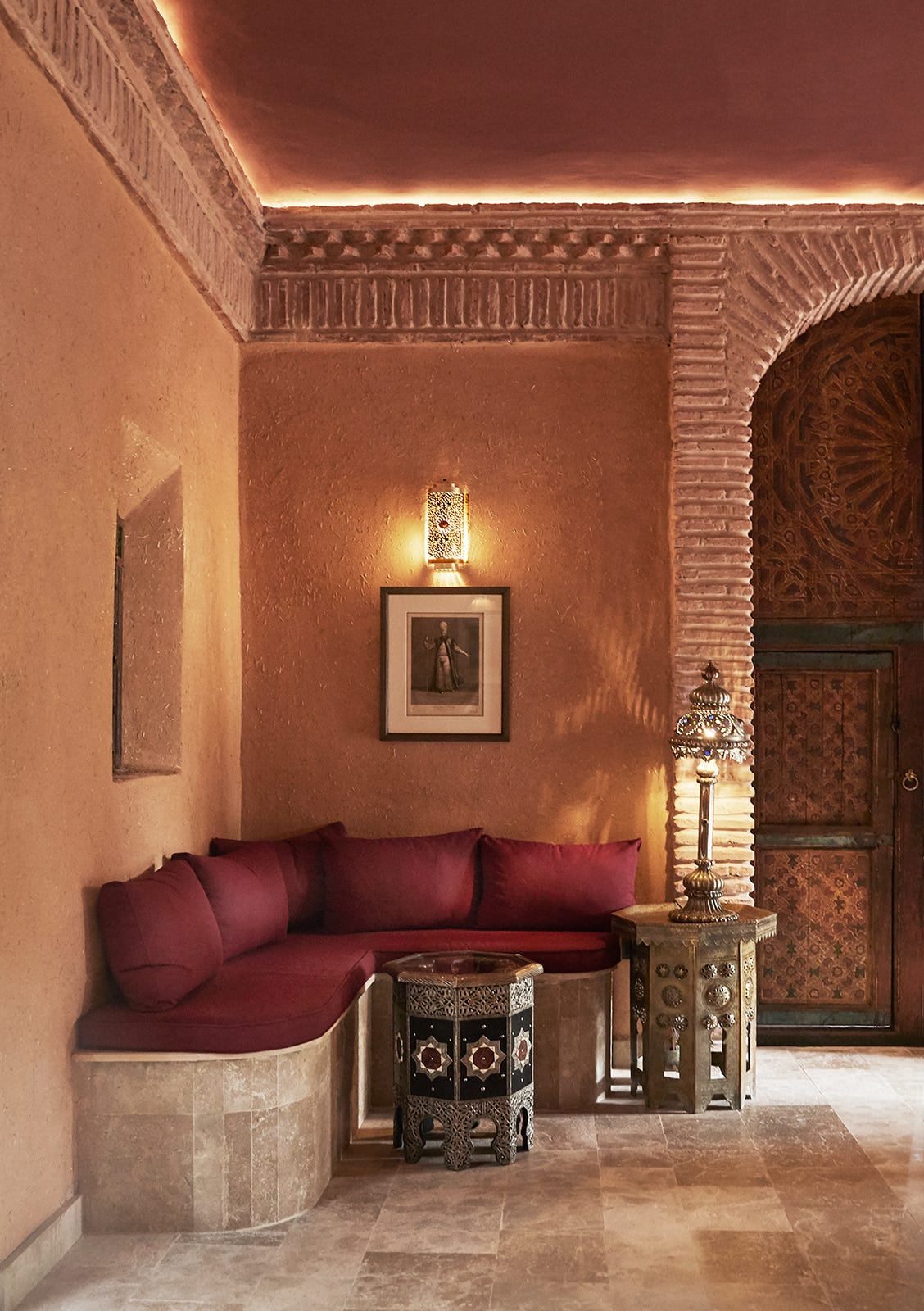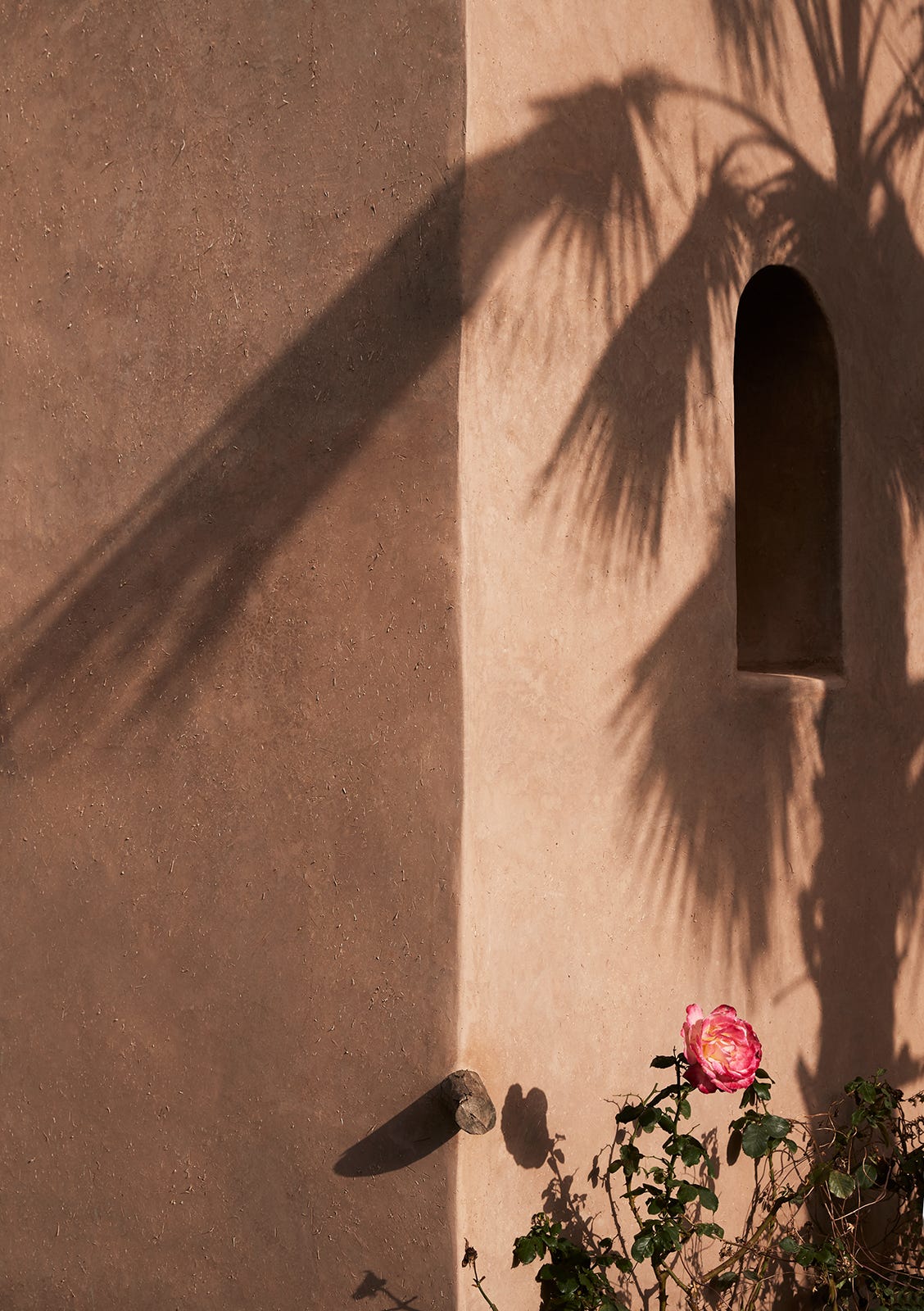The Secret Garden
Olinto’s nine guest pavilions are embedded in a vast garden, full of lavender, roses, and olive trees, in a far corner of the Atlas Mountains, created by Franco-Italian Prince Fabrizio Ruspoli.
“Magic is always pushing and drawing and making things out of nothing. Everything is made out of magic, leaves and trees, flowers and birds, badgers and foxes and squirrels and people. So it must be all around us.” (The Secret Garden)
Frances Hodgson Burnett’s The Secret Garden is the story of a neglected girl, born in British India at the turn of the 20th century. Following the death of her parents, she is sent back to England to stay with a distant relative, in his country house on the Yorkshire Moors. Her new maid tells her of a private walled rose garden, closed and with the key buried. The girl and her new friends find the key and begin restoring the garden to its former glory. It’s one of the greatest classic British children’s books, revolving around the theme of nature’s healing power and the importance of empathy.
The book was a big part of my childhood, but I hadn’t thought about it in many years until the day I arrived at Olinto. Each of the hotel’s nine pavilions are named after one of the garden’s dominant plants, every single guest house positioned discreetly in the garden to ensure the highest level of privacy.
Like in the book, the presence of cultivated nature on the estate creates a theme of soothing harmony, helping the guests to relax and feel at ease.
All pavilions come with their own private walled garden, with courtyard and canopy bed for sunbathing. This explains why even though the communal areas are breathtakingly beautiful and immaculately planned, most times they’re empty, as many guests prefer to stay in the privacy of their own pavilions. Also, even though there are people present, the estate is so large that it never feels crowded.
Morocco is a country renowned for its artisanal craftsmanship, which shows both in the hotel’s external architecture and its interiors. The zouak doors, carved plaster, mashrabiya screens, and woven rugs are all proud testaments to the long Moroccan handicraft traditions. Many of the interior details have been personally designed by Prince Ruspoli di Poggio Suasa himself.
There are a few reasons the Ruspoli name sounds familiar. One is that he was the driving force behind the iconic La Maison Arabe, the first boutique riad-hotel in Marrakesh. This hotel was one of the first to ignite a wider and more general interest in Marrakesh as a destination (outside of those in the creative fields who had been in the know for decades, if not centuries).
For a long time, La Maison Arabe was a natural gathering point in Marrakesh, as the town became modernized and adapted to the needs of a new kind of traveller. Another reason is that the Ruspolis are one of the most prestigious families in Europe. The family’s extensive gallery of characters includes everything from dashing international playboys to people directly influencing the course of western history.
The name “Olinto” dates to the 17th century, to the early years of the Arcadian Academy, a literary and musical society founded in Rome in 1690. According to the Encyclopædia Britannica, the academy’s mission included, “to exterminate bad taste, and to see to it that it shall not rise again.” To the Academy's members, the ancient Greek region of Arcadia was emblematic of pastoral contentment, innocence, and peace; an environment where music and poetry could flourish. Hosts of the Academy’s meetings and concerts invariably came from the noble families of Rome, including Marquis Francesco Maria Ruspoli. The academy’s members chose names for themselves from Greek antiquity and Ruspoli’s alias and namesake was Olinto, a son of Hercules.
When the Prince first acquired the estate, it consisted of two very humble hotels and a grove of olive trees. The trees are still here, but everything else – approximately 95 percent of all the greenery – has been planted according to a meticulous garden design. Most of the old buildings have been demolished, but the combined shop and cooking class-restaurant, in the centre of the garden, were once part of the original structure. If you take a class, you’ll use ingredients grown in the garden, and in the shop, you can buy many of the lotions and creams used at Olinto’s spa.
The spa, housed in a beautiful independent building, offers a range of services. Having just been on an arduous trek in the mountains a few days before arriving, I opted for a foot reflexology massage. Afterwards, I relaxed on a lounge bed, drinking mint tea and feeling my feet thanking me for restoring them back to health (after a mountain trek in boots at least one size too small). If you want more than merely a foot massage, there is also a complete hammam, as well as several types of massages and herbal cures, often inspired by Berber traditions.
We met with the Prince to learn more about the history behind Olinto.
What made you want to create Olinto?
After thirty-three years in Marrakesh –I arrived there in 1992 – my mind, body (and dare I say soul) was clamouring for a change. During those years, I saw the rapid transformation of the city from a calm, provincial town to the vibrant city and international destination it has become today. That hustle and bustle, which might have appealed to me as a younger man, was no longer what I needed or wanted. I yearned for calm and serenity, something incompatible with what the city has become.
I was increasingly drawn to the countryside outside the city. When my previous hotel in the medina of Marrakech was sold, I didn’t want to “retire” as others would have done in my shoes. I needed another project, and it was only natural that it be in a rural rather than urban setting. The result is Olinto.
How would you describe Olinto to someone who hasn’t yet been?
Olinto is a mountain retreat for those seeking a close contact with the natural beauty of the High Atlas Mountains, with the extraordinary Amazigh (Berber) people of Morocco, and with the Kingdom’s exceptional craftsmanship.
It’s a place for those wanting silence, for those in love with gardens. Although one finds at Olinto all the comfort one would expect from a luxury property, I hope there’s an understated elegance here that is key to Olinto’s identity.
What do guests enjoy the most about staying at your hotel?
Olinto is not your typical hotel. It’s a retreat in every sense of the word, an escape from the stress that seems to be so pervasive in our everyday lives. Guests come here primarily for that escape.
We receive many compliments on Olinto’s staff: all the men and women working at Olinto come from the neighbouring villages – they have an innate kindness and sense of hospitality that is in the Berber people’s DNA.
Guests l ove discovering the local area, taking long hikes with a guide and immersing themselves in Berber culture. They also love our farm-to-table kitchen; we grow, organically, most of the produce that is used by Olinto’s kitchen.
Guests appreciate that every detail at Olinto is Moroccan, from the painted doors to the ironwork, to the local brick and stonework, to the magnificent zouaké (painted) ceiling above the bar…there is a real sense of place.
Could you describe the area that the hotel is in?
Olinto is in a beautiful and verdant mountain valley. Towards the west, as far as the eye can see, is a royal hunting ground, and towards the east, the stunning Toubkal National Park. Olinto is located within an age-old olive grove in the middle of this magnificent valley.
Did you have a connection to the Atlas Mountains before opening the hotel?
My previous home was just a few minutes outside Marrakesh. Often, when friends would visit, we would do a day excursion up to this beautiful valley in the High Atlas Mountains and enjoy lunch at the legendary La Roseraie, just up the road from where Olinto is located today. I always felt a powerful, telluric energy in this valley that kept drawing me back, and finally for good.
What was here before you transformed the place into Olinto?
There was a small guest house built within a sprawling olive grove with hundred-year-old trees and beautiful stone walls.
What would you say separates Olinto from your previous hotel, La Maison Arabe in Marrakesh?
The former is in a calm, rural setting, the latter in a bustling, vibrant city. But both showcase the best of Moroccan craftsmanship, and both offer an exemplary level of service.
What do you enjoy most about working in hospitality?
The kind words and feedback from random guests as I walk my beloved dog, Alba. They comfort me and reassure me that I have not erred in my vision for Olinto; that there are others who are seeking the same things in life and when they travel. And the beautiful smiles on staff members’ faces!
In previous interviews, you’ve spoken about your early memories of Morocco, visiting your grandfather in Tangier as a child. What is it about Morocco that made you want to make it your home?
It was actually my grandmother (paternal grandmother to be exact; Marthe de Chambrun Ruspoli) who moved to Tangier in 1946. My elder brother and I would spend our summer vacations at her home beginning in the late 1950s and throughout the 1960s.
As a result, I developed roots here in Morocco. It really became a second home to me. I loved Morocco’s marked contrast with France: its light, its colours, its cuisine and architecture. There was something pure and honest about the Moroccan people; from a young age I was impressed by their generosity and hospitality.
Later in life, when I was yearning for a major life change, it was only natural that I explore opportunities in the Cherifian Kingdom.
This article was originally published in Lohi Journal #3.


